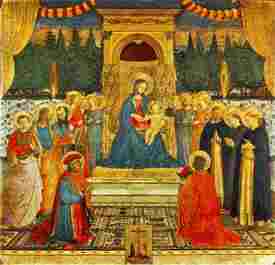Have you thought much about the terrific connection between the Blessed Mother and the Holy Spirit? There is an ever stronger interest in my heart that is building in me to experience more fully this intimacy, this desire of the Lord that is known in the heart of Mary. I mentioned it the other day by suggesting using some of the mysteries of the rosary to allow us to consider that intimacy between the Divine and the human. The Pope gave the follow meditation yesterday evening, the Vigil of Pentecost:
I greet all of you with affection at the end of the
traditional Marian vigil that concludes the month of May in the Vatican. This
year it has acquired a very special value since it falls on the eve of
Pentecost. Gathering together, spiritually recollected before the Virgin Mary,
contemplating the mysteries of the Holy Rosary, you have relived the experience
of the first disciples, gathered together in the room of the Last Supper with
“the Mother of Jesus,” “persevering and united in prayer”
awaiting the coming of the Holy Spirit (cf. Acts 1:14). We too, in this
penultimate evening of May, from the Vatican hill, ask for the pouring out of
the Spirit Paraclete upon us, upon the Church that is in Rome and upon the
whole Christian people.
The great Feast of Pentecost invites us to meditate upon the
relationship between the Holy Spirit and Mary, a very close, privileged,
indissoluble relationship. The Virgin of Nazareth was chosen beforehand to
become the Mother of the Redeemer by the working of the Holy Spirit: in her
humility, she found grace in God’s eyes (cf. Luke 1:30). In effect, in the New
Testament we see that Mary’s faith “draws,” so to speak, the Holy
Spirit. First of all in the conception of the Son of God, which the archangel
Gabriel explains in this way: “The Holy Spirit will descend upon you and
the power of the Most High will overshadow you” (Luke 1:35). Immediately
afterward Mary went to help Elizabeth, and when her greeting reached
Elizabeth’s ears, the Holy Spirit made the child jump in the womb of her
elderly cousin (cf. Luke 1:44); and the whole dialogue between the two mothers
is inspired by the Spirit of God, above all the “Magnificat,” the
canticle of praise with which Mary expresses her sentiments. The whole event of
Jesus’ birth and his early childhood is guided in an almost palpable manner by
the Holy Spirit, even if he is not always mentioned. Mary’s heart, in perfect
consonance with the divine Son, is the temple of the Spirit of truth, where
every word and every event are kept in faith, hope and charity (cf. Luke 2:19,
51).
We can thus be certain that the most Sacred Heart of Jesus,
in his whole hidden life in Nazareth, always found a “hearth” that
was always burning with prayer and constant attention to the Holy Spirit in
Mary’s Immaculate Heart. The wedding feast at Cana is a witness to this
singular harmony between Mother and Son in seeking God’s will. In a situation
like the wedding feast, charged with symbols of the covenant, the Virgin Mary
intercedes and, in a certain sense, provokes, a sign of superabundant divine
grace: the “good wine” that points to mystery of the Blood of Christ.
This leads us directly to Calvary, where Mary stands under the cross with the
other women and the Apostle John. Together the Mother and the disciple
spiritually taken in Jesus’ testament: his last words and his last breath, in
which he begins to send out the Spirit; and they take in the silent crying out
of his Blood, poured out completely for us (cf. John 19:25-34). Mary knew where
the blood came from: it was formed in her by the work of the Holy Spirit, and
she knew that this same creative “power” would raise Jesus up, as he
promised.
In this way Mary’s faith sustains the faith of the disciples
until the meeting with the risen Lord, and will continue to accompany them even
after his ascension into heaven, as they await the “baptism of the Holy
Spirit” (cf. Acts 1:5). At Pentecost, the Virgin Mary appears again as
Bride of the Spirit, having a universal maternity with respect to those who are
born from God through faith in Christ. This is why Mary is for all generations
the image and model of the Church, who together with the Holy Spirit journeys
through time invoking Christ’s glorious return: “Come, Lord Jesus”
(cf. Revelation 22:17, 20).
Dear friends, in Mary’s school we too learn to recognize the Holy Spirit’s presence in our life, to listen to his inspirations and to follow them with docility. He makes us grown in the fullness of Christ, in those good fruits that the apostle Paul lists in the Letter to the Galatians: “Love, joy, peace, magnanimity, benevolence, goodness, fidelity, meekness, self-control (5:22). I hope that you will be filled with these gifts and will always walk with Mary according to the Spirit and, as I express my praise for your participation in this evening celebration, I impart my Apostolic Benediction to all of you from my heart.
